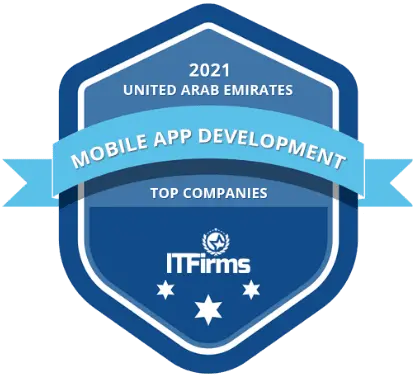Innovation has been a game-changer for asset tracking, with the introduction of barcode labels, asset tags, and the integration of barcode scanning into asset tracking software, as well as policies to manage the asset lifecycle. From startup to enterprise, asset tracking software helps to develop the right IT infrastructure, control assets, reduce losses, improve operational efficiencies, and provide customer support. This software can provide invaluable insights for decision-making, tracking the status and live location of assets, which can include inventory, tools, equipment, and vehicles. Reflecting its growing importance, the global asset tracking market size was valued at USD 23.32 billion in 2024 and is projected to grow from USD 25.98 billion in 2025 to USD 59.64 billion by 2032, exhibiting a CAGR of 12.6% during the forecast period.
Let’s go through all the key details related to asset tracking software development and how it assits make informed decisions, improve asset reliability, and implement the right technology. Asset tracking plays a crucial role in logistics software development services, where efficient management of tools, equipment, inventory, and fleet is essential for seamless supply chain operations. By integrating advanced asset tracking features, logistics solutions can drive better visibility, reduce delays, and optimize resource utilization across the board.
What Is Asset Tracking Software?
Asset tracking software is specifically designed to monitor and manage the lifecycle of physical assets. It features integrated tracking capabilities for the live status of locations, including inventory, tools, vehicles, and equipment. For any business struggling with cost control measures, scheduling maintenance, and compliance, this asset management software will help optimize operations and maximize ROI.
Primarily, this software serves as a centralized repository that enables businesses to store, capture, and analyze asset-specific data targeting both digital and physical assets. Trending tech for asset tracking is IoT (Internet of Things), RFID (Radio Frequency Identification), or GPS (Global Positioning System), which can enable automation and provide more accurate results.
Asset tracking software is gaining visibility in the industry because it can reduce manual errors and provide more accurate results. It has versatile applications in logistics, transportation, manufacturing, agriculture, healthcare, retail, and construction. Across these industries, this technology supports critical operations such as logistics coordination, equipment tracking, vehicle fleet management, asset protection, and maintenance scheduling. As businesses increasingly adopt digital solutions, asset tracking has become an integral feature of supply chain software development services, enabling organizations to gain real-time visibility into asset movement, optimize inventory levels, and enhance overall supply chain efficiency.
Key Features of Asset Tracking Software
Finding the right asset-tracking software with the best features helps businesses manage, monitor, and optimise for real-time use of physical assets. Enlisting the top features will boost productivity, provide accurate site status, and prevent asset loss and equipment downtime. Here are the essential features of asset tracking software:
Real-Time Asset Tracking
For greater visibility and transparency, it utilizes barcode scanning and QR codes or tags to track real-time asset locations. It is an essential feature of software that syncs with data reports, reducing the risk of theft.
Access Control
Tracking software can monitor assets located at various sites, and an integrated access control feature provides increased transparency and flexibility. Using credentials, it supports multiple devices, and operators can track at their own pace and comfort.
Interactive Dashboard
One of the useful features of creating planning tools and dashboards is to keep track of repair costs over time. It helps to make informed decisions with visualised numbers on a spreadsheet, along with context for graphs and charts. Operators can make cost-effective decisions based on the estimated budget plan.
Cloud Storage
In the tracking software industry, cloud-based data storage enables teams to store key details, including asset types, updated locations, asset IDs, and maintenance history. It enables the easy capture of data for inventory workflows, with extended cloud support.
Offline Versions
Heavy machinery and equipment may be located in a distant area with low internet connectivity. This asset tracking software supports offline capabilities that automatically sync data and facilitate transaction processing without interruption.
Integration With Other Systems
If the existing asset tracking software is compatible with third-party integrations, such as ERP or WMS software, this will enhance its usability. This connectivity can create a centralised system for data management and support cross-functional usage with administration, finance, HR, and marketing teams.
Audit Trails
This integrated feature of asset tracking software helps improve accountability, security, and compliance. It helps organisations to create a detailed time log for asset lifespan and generate reports or documentation to comply with legal and regulatory protocols.
Why Do Businesses Need Asset Tracking Software?
Investing in the right asset tracking software can not only reduce cost and streamline your business process, but it also has versatile applications. If your business manages various classes of assets, tracking all your resources can be difficult with manual operations. Here’s how it can benefit businesses in multiple ways:
Increase Asset Life
With an asset tracking mechanism, it will be possible to check asset working conditions on various parameters regularly. It automatically sends alerts to the maintenance team for any repairs that fall outside of yearly schedules; this way, the life of the asset can be prolonged. Businesses can save a major portion of replacement costs using this asset-tracking software.
No Scope of Human Errors
Relying on manual processes can increase the risk of errors and typos, and even a slight deviation in data can result in huge investment losses for companies. Automated asset tracking systems provide real-time, unbiased data that enhances reliability and confidence in decision-making. Additionally, it facilitates genuine reporting, which aids in proper auditing.
Structure Tracking Process
Asset tracking is not an easy task to perform; it involves identifying assets, tracking their location, and managing them. So, instead of integrating multiple solutions, asset management software provides all-in-one technologies to manage the entire asset lifecycle without any loss.
High Productivity
Automated asset tracking software results in high productivity in less time, so there’s no requirement to log on for manual tasks. Manual processes may take longer to search for assets and optimize inventory management, as well as the maintenance process. Employees can simply log in and access all details of assets located at different sites.
Recovery of Lost Assets
For a more effective tracking system, each asset is equipped with a QR code or RFID tag, enabling sensors to monitor progress with ease. Asset tracking software provides real-time updates, enabling operators to determine which assets to send to a specific location and even recover lost assets. It reduces the risk of asset theft and the replacement of the original asset.
How to Develop Asset Tracking Software? (Step-by-Step Process)
Most companies investing in asset management software ensure effective asset utilisation, minimise downtime, and improve productivity to maintain an edge in the industry. But how can the development of this software take place? Here is the step-by-step process of developing asset-tracking software:
Step 1: Need Assessments for the Right Software
One of the foundational steps in developing asset tracking software is to assess the company’s requirements. Fleet managers can create a list of asset types and inventory management to understand the particular needs of the software. It helps to identify a solution that best fits the needs and budget by exploring tracking software solutions available in the market.
Step 2: Find the Right Tech Stack
Finding the right tech stack for asset management software development, including frontend, backend, database, and other components, helps to design optimising capabilities. You can choose between React, Vue.js, Angular, Flutter, Node.js, Firebase, MongoDB, and PostgreSQL.
Step 3: Building Core Modules
Next, you can proceed with developing modules for authentication, like user roles, asset registration, asset tracking dashboard for real-time map and asset status, maintenance and lifecycle management, alert and notification, like email and SMS, reporting and analytics.
Step 4: Integration and Implementation
Once the asset requirement is finalized, the next step is to identify the ideal asset management software with the best-fit functionalities and other integration capabilities with ERP and CRM software. Next, you can integrate and install hardware, including GPS trackers and RFID tags, to set up asset monitoring and data collection.
Step 5: System Optimisation and Maintenance
After installation, the software’s reporting function requires regular monitoring and analysis of the asset to identify key patterns and insightful information, ultimately informing strategic decisions. To identify anomalies, you require a regular audit to ensure data integrity and maintain a digital record for verifying physical assets.
Asset Tracking Technologies
| Technology | Description | Best Use Cases |
|---|---|---|
| GPS Tracking | Utilizes satellites to track asset locations in real-time. | Vehicles, heavy machinery, fleet management |
| RFID (Radio Frequency Identification) | Tags and readers track assets without a line of sight. | Warehouse inventory, tool tracking, libraries |
| Barcode Scanning | Scans printed barcodes to update asset status. | Retail stock, equipment check-in/check-out |
| Bluetooth Low Energy (BLE) | Short-range wireless tracking, low power consumption. | Indoor tracking, tool rooms, rental equipment |
| IoT Sensors | Collects data like temperature, vibration, or usage hours. | Perishable goods, sensitive electronics |
| QR Codes | Printable codes that users scan with phones or scanners. | Small businesses, field service assets |
How Much Does It Cost to Develop Asset Tracking Software?
Any asset tracking software comprises several components that help in monitoring, managing assets, and identifying site locations. So, the development cost to develop asset tracking software depends on asset types, on-premise and cloud-based solutions, and features customisation. Let’s understand different classifications with the use of a table estimating for asset tracking software development cost:
| Development Stage | Estimated Cost Range | Description | Notes |
|---|---|---|---|
| Requirements Gathering | $5,000 – $15,000 | Research, documentation of needs, and tech planning | Cost varies based on complexity and the industries involved |
| UI/UX Design | $8,000 – $20,000 | Wireframes, prototypes, and user flow designs | Custom designs cost more than using templates |
| Backend Development | $20,000 – $60,000 | Server-side development, APIs, and database setup | Depends on features such as real-time tracking and analytics |
| Frontend Development | $15,000 – $40,000 | User-facing mobile or web apps | Cost grows with platforms (web + mobile = more expensive) |
| IoT Device Integration | $10,000 – $30,000 | Integration with GPS trackers, RFID, and Bluetooth devices | Hardware compatibility increases cost |
| Admin Panel Development | $10,000 – $25,000 | Dashboard for internal management and analytics | Needed for monitoring assets, generating reports |
| Testing & QA | $5,000 – $15,000 | Manual and automated testing across devices | More platforms require more intensive QA |
| Deployment | $3,000 – $10,000 | Launching to App Stores, server setup, and cloud hosting | Ongoing hosting fees are not included here |
| Maintenance & Updates | $2,000 – $10,000/month | Regular updates, security patches, and server upkeep | Critical for smooth long-term operation |
Development Cost Based on Platform Types
| Platform Type | Estimated Cost Range | Description |
|---|---|---|
| Web App Only | $40,000 – $100,000 | Browser-based asset tracking system |
| Mobile App Only | $50,000 – $120,000 | iOS or Android app (separate apps cost more) |
| Web + Mobile App | $80,000 – $180,000 | Full-stack solution (backend, web app, mobile apps) |
| Desktop Software | $60,000 – $130,000 | Windows/Mac-specific apps, less common today |
| Cloud-Based SaaS | $90,000 – $200,000+ | Multi-tenant cloud architecture with subscriptions |
Development Cost Based on Technology Stack
| Technology Stack | Estimated Cost Range | Example Use Cases |
|---|---|---|
| Native (Swift/Kotlin) | $80,000 – $160,000 | High-performance mobile apps |
| Cross-Platform (Flutter/React Native) | $60,000 – $140,000 | Faster mobile dev across iOS/Android |
| Web Technologies (React.js + Node.js) | $70,000 – $150,000 | Web-based portals and dashboards |
| IoT-Enhanced (LoRaWAN, Bluetooth) | $100,000 – $250,000 | Asset tracking with sensors and gateways |
Industries That Benefit from Asset Tracking Software
Organisations from different industries are adopting asset-tracking software to oversee assets, tools, equipment, resources, and properties. Integrating the best asset management software helps businesses save investments that might otherwise go to waste, manage resources effectively, and maintain credibility, thereby preventing damage to their reputation and financial loss.
Here is the list of industries that benefit from using asset tracking software:
Agriculture
Large farms typically operate the largest fleets of machinery, vehicles, and other equipment, which require regular tracking for usage and location updates. With the integration of GPS tracking, farmers can efficiently utilize resources and monitor their equipment. It can benefit from improved field planning with real-time updates, enhanced fuel efficiency, and the ability to send real-time alerts. This can safeguard their equipment and help them make informed decisions for resource allocations. Farmers use it to prevent theft, schedule repairs, reduce downtime, and also monitor livestock and their movements.
Some examples of these companies are AGCO Corporation, Deere & Company (John Deere), Ag Leader Technology, Raven Industries, and AgJunction.
Healthcare
This sector uses highly specialised equipment to provide patients with the utmost care and ensure smooth operation. Many healthcare facilities, hospitals, and clinics utilize GPS asset tracking to receive real-time updates on location and the condition of medical devices. It can prevent theft, ensure asset maintenance, and facilitate inventory management to align with purchasing requirements. Additionally, regulatory compliance requires maintaining a record of asset maintenance and conducting regular inspections.
A few examples of these companies are CenTrack, GuardRFID, Asset Panda, and Zebra Technologies.
Logistics and Transportation
This industry heavily invests in GPS asset tracking to manage fleets and cargo, as it is challenging to keep track of a large number of vehicles. Asset tracking software features, such as fuel and route optimisation, enable fleets to operate in real-time, ensuring on-time delivery and preventing breakdowns. The following asset utilisation reporting helps businesses determine whether to sell, lease, or purchase the asset. It also assists with audit trails for handoff points and cargo custody. Also, there is no risk of idle assets that add no value for money.
Top giants, including Blue Yonder, Samsara, and DHL, are utilizing asset-tracking software to enhance operational efficiencies and fleet management.
Rental and Leasing Companies
Renting out vehicles and equipment has gained momentum due to high demand worldwide. GPS asset tracking software enables businesses to effectively manage their assets and ensure they are returned in good condition. IoT-embedded sensors can continuously track equipment usage, prevent theft, automate billing, and schedule maintenance, thereby reducing downtime for rentals. Businesses will benefit from charging customers based on hourly and per-mile rates, as well as detecting early signs of misuse and overuse of assets.
For instance, some companies are United Rentals, Ryder System Inc., Sunbelt Rentals, Herc Rentals, and Penske Truck Leasing.
Trends in Asset Tracking Software Development
With the rapid technological advancement of asset-tracking solutions, the industry is experiencing innovations that result in operational inefficiencies, increased costs, and compromised security. Digital transformation has become the backbone for asset tracking technology, enabling retail owners, managers, and supply chain operators to utilize AI, ML, and blockchain to enhance functionalities.
Mobile Tracking Updates
Optimising for mobile technology plays a vital role in asset tracking devices that allow employees to monitor directly from tablets and smartphones. For managing assets, it features GPS tracking and barcode scanning, which help send real-time alerts. It can improve operations, reduce errors, and enable prompt data-driven decision-making.
Emergence of AI and IoT-based Sensors
One of the key trends for tracking assets is the integration of AI and IoT-based sensors, enabling real-time asset monitoring. It can share updates on asset location, condition, and usage, providing actionable insights. Businesses can use these features to predict asset maintenance, identify patterns, and make real-time asset allocations. As an AI chatbot development company with expertise in intelligent automation, we also explore how conversational AI can complement asset tracking—enabling instant query resolution, automated alerts, and streamlined communication between systems and users.
Sustainable Asset Tracking
Increasingly, businesses are prioritizing sustainability and promoting eco-friendly practices. There is a considerable environmental impact of carbon emissions due to asset usage. The organisation will be using an asset tracking system to optimise for waste reduction, resource utilisation, and energy consumption. It complies with their corporate social responsibility goals.
Blockchain for Asset Tracking
Blockchain is creating more traction for asset tracking due to its enhanced capability for more security, traceability, and transparency. Mostly, industries such as supply chain management and logistics will adopt more blockchain-based asset tracking platforms. It helps build more trust for customers and partners through the tracking process.
Predictive Analytics
It is another trend reshaping asset tracking, where managers can collect vast amounts of data to forecast asset performance, identify errors, and optimize maintenance schedules. It can be integrated with RFID inventory tracking to get desirable results for asset utilisation. This helps anticipate maintenance needs and reduce downtime, thereby improving overall efficiency.
Cloud-Based Platform
Cloud asset tracking offers numerous benefits, including automation, enhanced visibility, flexibility, and protection against cybersecurity risks. It helps businesses to bring real-time collaboration, data analytics, and integrations with other enterprise systems. Following this approach, it enhances functionality for asset management, offers unlimited storage, and reduces maintenance costs.
How Can NineHertz Help You with Asset Tracking Software Development?
As the trusted software development company, NineHertz will develop your best-fit asset tracking software. We have over 15 years of industry experience, backed by a team of experts who research asset utilisation and optimise physical assets, capturing real-time data. Here, NineHertz is ready to combine the best tech stack with innovative ideas to build scalable and user-friendly asset tracking software.
Whether you are aiming for simple integration or seeking IoT-based asset tracking, BLE (Bluetooth Low Energy) RFID (Radio Frequency Identification), or GPS-based solutions, NineHertz provides comprehensive services. From initial consulting to requirements from UI/UX design, backend development, and system integration. Get a free estimate to discuss your project requirements, budget, and timeline!
Conclusion
In today’s dynamic business era, whether you are a small business or a big enterprise, you require inventory management to keep track of all your assets. All you need is asset tracking software to identify assets based on key details for location, serial number, condition, and value. The market is already expanding its use of asset tracking technologies, including GPS tracking, RFID tags, barcode labels, and QR codes. It drastically increases demand for asset-tracking software that scales business growth and increases the asset base with flexibility. You can explore the best features available, the benefits, and assess the development cost to integrate effective solutions.
Frequently Asked Questions
What is the difference between asset tracking and inventory tracking?
Asset tracking is the process of monitoring asset movements, updating locations, and verifying the status of valuable assets. On the other hand, inventory tracking focuses on monitoring goods that are meant to be sold and consumed, measuring stock levels, reorder points, sales data, and warehouse locations.
How long does it take to develop asset tracking software?
It depends on platform type, hardware integration, real-time monitoring, workflows, security, and compliance. So, overall it takes around 2 to 4 months for developing asset tracking software, middle-level software may take around 5 to 8 months and advanced software will take more than 10 months.
Can asset tracking software integrate with existing ERP systems?
Yes, asset tracking software can integrate with other ERP systems to track financial data, procurement activities, and operations. It can be either one-way integration or two-way integration.
Is cloud-based or on-premise asset tracking better?
Both asset tracking solutions have their benefits; however, cloud-based solutions offer more scalability, affordability, and accessibility from remote locations.








